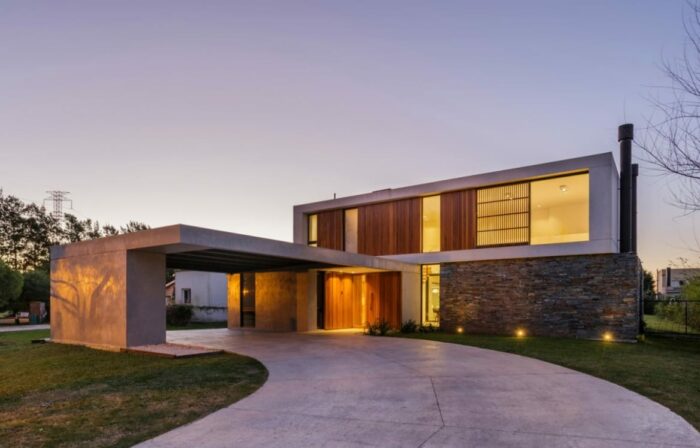When it comes to roofing options, flat roofs have gained popularity for various reasons. They offer a modern and sleek aesthetic, provide additional outdoor space, and are commonly used in commercial and residential buildings.
However, like any roofing system, flat roofs come with their own set of advantages and disadvantages. In this article, we’ll explore the pros and cons of a flat roof, helping you make an informed decision for your roofing needs.
Pros of a Flat Roof

- Cost-Effective Installation: One of the significant advantages of flat roofs is their cost-effectiveness during installation. The materials required for a flat roof are typically less expensive than those used for pitched roofs. Additionally, the simplified construction process can reduce labor costs, making flat roofs a budget-friendly option.
- Utilization of Space: Flat roofs provide an additional usable space that can be turned into a rooftop garden, patio, or even an outdoor living area. This feature can enhance your property’s value and create a more enjoyable living environment.
- Energy Efficiency: Flat roofs often have better insulation options compared to pitched roofs. This means you can control indoor temperatures more efficiently, potentially reducing heating and cooling costs.
- Easy Maintenance: Maintaining a flat roof is generally easier than maintaining a pitched roof. Routine inspections and repairs are simpler to perform, and access to the roof surface is straightforward.
- Longevity: With proper maintenance and quality materials, flat roofs can have a long lifespan. EPDM (Ethylene Propylene Diene Monomer) rubber roofing, such as the one available at rubberroofingdirect.co.uk, is known for its durability and can last for decades.
Cons of a Flat Roof

- Drainage Issues: Flat roofs don’t have the natural slope that pitched roofs do, which can lead to drainage problems. Standing water can accumulate, potentially causing leaks and water damage if not addressed promptly.
- Maintenance Demands: While flat roofs are generally easier to maintain, they do require regular attention. Debris, leaves, and other materials can accumulate and block drainage systems, leading to problems if left unattended.
- Susceptible to Leaks: Flat roofs are more prone to leaks compared to pitched roofs. The lack of slope makes them vulnerable to water infiltration, especially in areas with heavy rainfall or snowfall.
- Limited Aesthetic Variety: Flat roofs may not be suitable for all architectural styles. Some homeowners prefer the traditional look of pitched roofs, and flat roofs may not fit their desired aesthetic.
- Initial Cost of Quality Materials: While flat roofs can be cost-effective during installation, using high-quality materials, like EPDM roofing, can be more expensive upfront. However, the investment can pay off in terms of longevity and reduced maintenance costs over time.
Flat roofs have their own set of advantages and disadvantages. They are cost-effective, offer additional usable space, and can be energy-efficient with proper insulation.
However, they require regular maintenance to prevent drainage issues and leaks. Choosing quality materials like EPDM roofing can help mitigate some of these concerns.
Before deciding on a flat roof for your property, it’s essential to consider your specific needs, budget, and aesthetic preferences.
If you decide to go with a flat roof, make sure to invest in quality materials and regular maintenance to maximize its lifespan and benefits. For EPDM roofing tools and materials, you can explore the options available at https://www.rubberroofingdirect.co.uk/epdm-roofing-tools.html to ensure a durable and reliable roofing system for your property.
 Jessica Paster The Future is Green
Jessica Paster The Future is Green